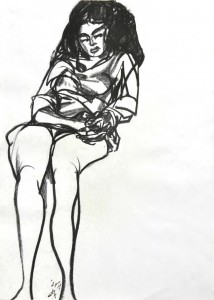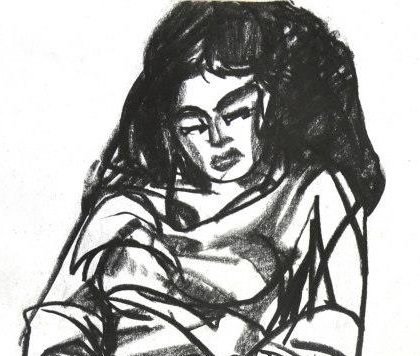
Courtesy of Gallery Misr Facebook page
The human form has fascinated artists since the time of the Greeks. However there is a line between aesthetically pleasing and just plain creepy. El Dessouki Fahmi’s exhibition, Eros, crossed this line.
While it is understandable Eros was the Greek god of love and desire, it does not mean that squiggly line drawings of crotches and butts should be considered art. Going through the exhibition artwork, it is hard to feel any kind of connection to the sketches. Most of them are of strange-looking women in repose, with an emphasis on thighs and crotches.
At a time when women are objectified in every sort of medium, you would think that art would try to correct that. The exhibition’s brochure states: “When Dessouki Fahmi was a small child, he used to spend his leisure time contemplating young peasants’ bodies, enjoying seeing their curves under the setting sun’s rays.” We fail to understand the intended effect of this paragraph, but if it attempts to imply that Fahmi was a Peeping Tom, then it has succeeded.
Even senior citizens did not escape the attack of the squiggly crotch.
The brochure mentions Botticelli, Mahmoud Mokhtar, Renoir, and Modigliani. Although Fahmi’s sketches are somewhat similar in their use of perspective to Modigliani’s nude paintings, they do not conjure the same feelings in the viewer.
While we are all for exploring human senses, Fahmi’s sketches do not do that. If he really wanted to differentiate between the sensual and the sexual, then in our humble opinion, he failed. We felt his sketches only managed to condense the whole idea of womanhood in female genitalia, with a side of conical boobs.
The Eros exhibition is currently on display at the Gallery Misr in Zamalek, and runs until 21 March.




